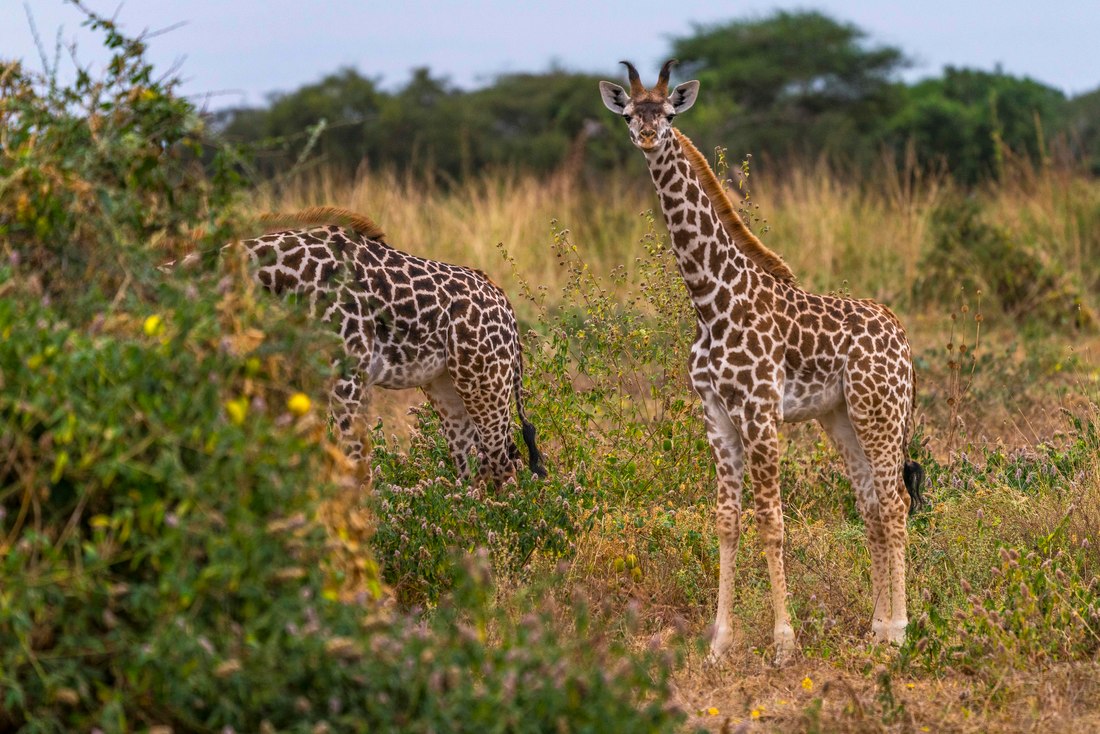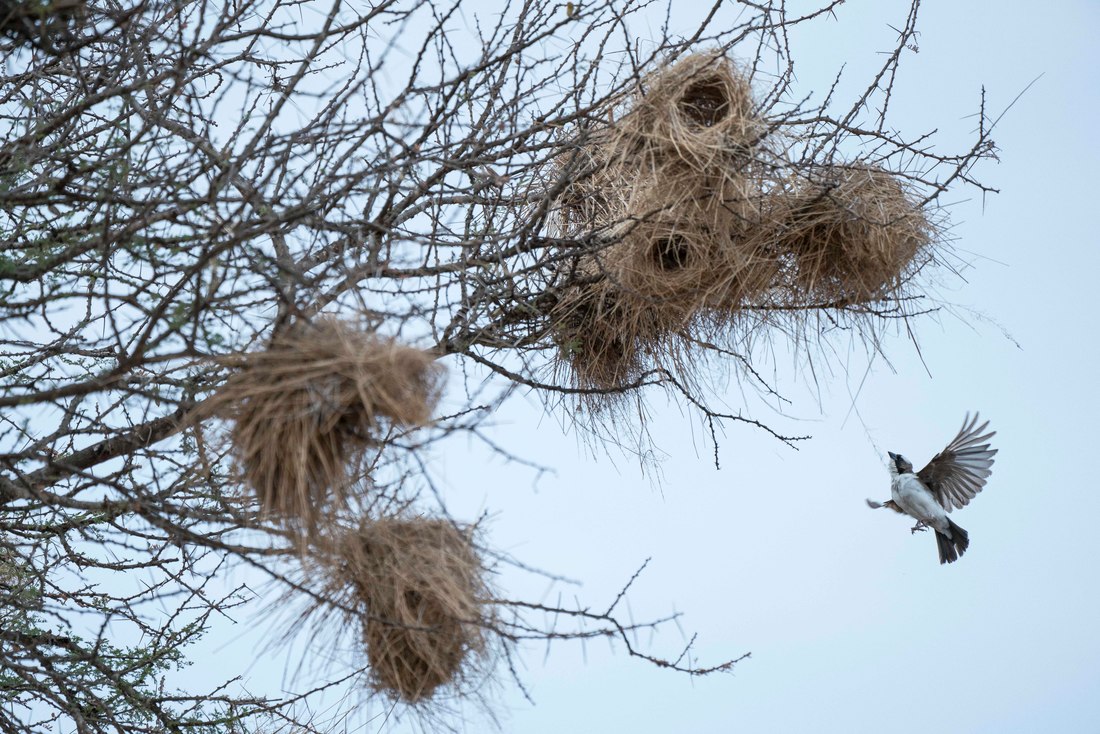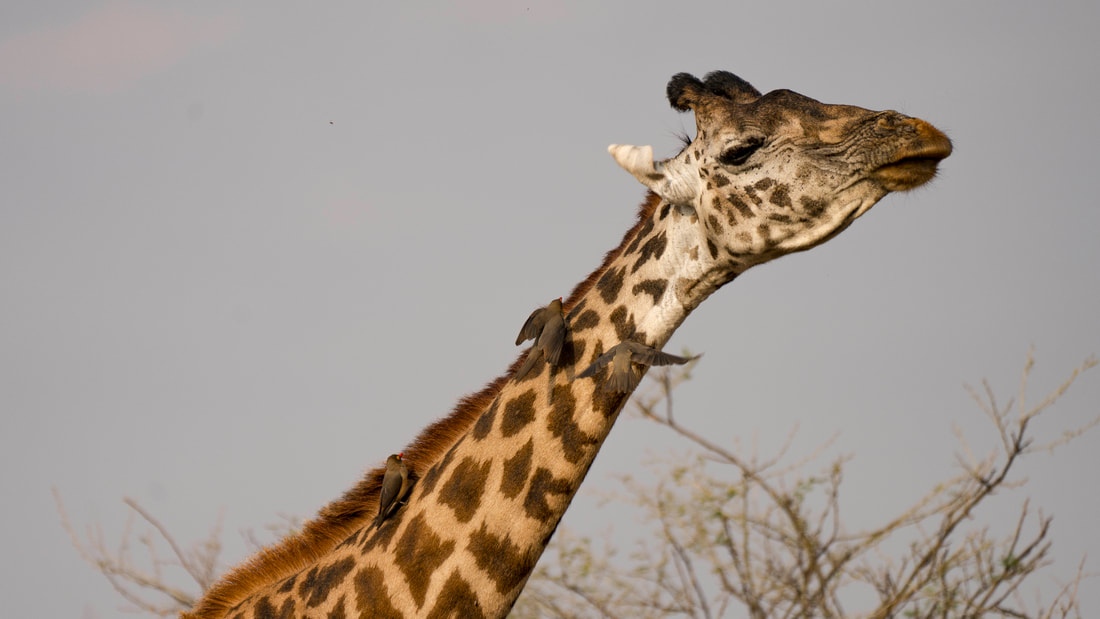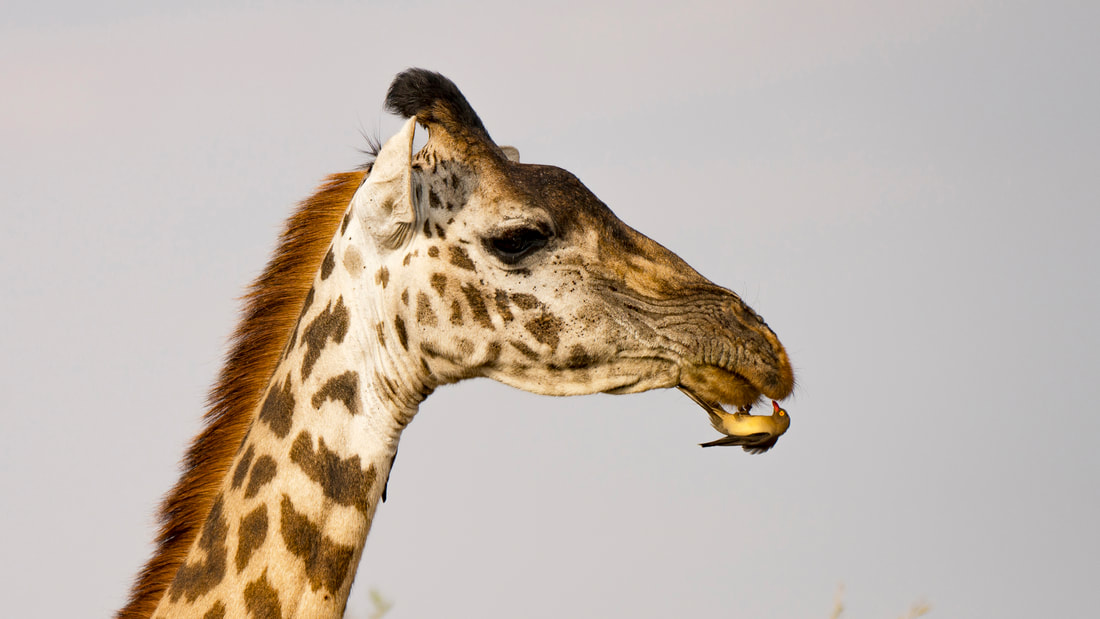|
The morning after our return from Amboseli we greeted a nervous guest at the breakfast table. She was part of a young couple from Sidney, he originally from Brazil and she from Hungary. It was their first safari and she had had a difficult night. A lion had been in the camp the night before and all of us heard his deep growl, actually more of a ruff than a growl, throughout much of the night. It kept our fellow guest up and shook her to the core. She could not talk about it without showing a shake in her hands. At breakfast, she shared her experience. How the lion hand come close to her tent and how she worried it might somehow get in. She did not sleep much. "I know no one has been eaten by a lion in these camps," she said. "But, what if I am the first!" Breakfast calmed her and she was ready to go when the morning drive started. That drive treated us to giraffe, zebra, elephants and weaver birds. Above, you can see a curious young calf looking straight at us. Below, you can see an adult giraffe watching herd over a "journey" of young giraffe. As we learned from our guides, mother giraffes do not stay with their calves after they are born. Instead, one female takes over the task for all the young in a herd, or "tower" of giraffes. Everywhere we drove this day we saw trees full of elaborate hanging bird nests, sometimes dozens in a single tree. Often, a tree would contain nests from multiple weaver bird species. Smaller nests from white-browed sparrow weavers and grey-capped social weavers and large nests, typically near the top of a tree, from buffalo weavers. The darker headed white-browed sparrow weaver above is headed into to her nest. Its the one with the opening on the lower left corner of the upper group. The four birds below with their nest are the grey-capped social weavers. This day also brought us in contact with the majestic elephant mixed in with giraffes and zebra (see our September 24 post Safari Countdown for that image) and the following surprise bush visit from grazing female. She quietly approached our vehicle while we were watching a nearby tower of giraffe. It was a busy drive. We also spotted white bellied go-away birds, large blue grey birds with a tall tuft above their head that would make a cardinal envious. On a termite hill long abandoned by its builders we also spied a family of dwarf mongoose. They had taken residence and filled the hill with their tunnels. And, they were as curious about us as we were about them. Our morning drive was followed with an opportunity to walk near the camp. Our Maasai spotter and driver joined along with two armed Maasai guides. Our path followed a dirt road out from the camp through brush and an open field. We explored the plants and saw giraffe and gazelles as we walked. The giraffe seems bigger when you are walking. Daniel, the English name of our Maasai spotter, answered questions as we walked. A fallen weaver bird nest gave us an opportunity to examine its structure. And, an annoying fly gave us insight in the Maasai mind. As we walked, I kept getting buzzed by a fly. He would dive into my ear and then around my head. My fruitless swatting caught Daniel's attention. He walked over and gently plucked the annoying fly out of my ear. Then he showed it to me and walked over to a bush to release it. I probably would have done physical harm to the little beast but he just moved it and we carried on with our walk. It was totally in character with what we learned about the Maasai during our trip. They have a deep relationship with their environment and the animals that inhabit it. They do not hunt, relying instead on cattle for their meat. They respect all life. Even the flies. We end this posting with the beginning of our afternoon game drive which stopped shortly after it started to watch a giraffe get an aerial cleaning. Standing out in the open was a single Maasai giraffe being attended to by half a dozen red-billed oxpeckers. They flew around his neck and head and landed here and there to groom him. One even landed on his lower lip to pick items out of his mouth. From here we headed out toward a Maasai village to get a chance to meet the camp's landlords. The conservancy is on Maasai land and leased from the Maasai tribe. The fact that the Maasaai do not hunt wildlife probably contributes to how unconcerned the animals appear to be with our vehicles which makes the viewing so much easier.
But more about that next week when we explore the village and the Maasai people. _ _ _ _ _ All photos and text are copyright Clinton Richardson. The images are from the author's Safari Collection at Trekpic.com. If you like these posts, please tell your friends about the Venture Moola blog at Readjanus.com. Want to plan your own safari? If so, feel free to check out the outfitter we used at Porini.com. And, feel free to share this blog. The more readers the better. Click here if you would like to get a weekly email that notifies you when we release new entries. Or, click in the side column to follow us on Facebook or Twitter. The venture moola blog comes to you from Atlanta, Georgia. Find it at readjanus.com. Copyright Clinton Richardson.
Comments are closed.
|
the blog
Travel, history, and business with original photos.
your hostClinton Richardson - author, photographer, business advisor, traveler. Categories
All
Archives
July 2023
Follow us on Facebook
|
Check out Ancient Selfies a 2017 International Book Awards Finalist in History and 2018 eLit Awards Gold Medal Winner and
Passports in his Underpants - A Planet Friendly Photo Safari a 2020 Readers' Favorite Winner in Nonfiction
Site Copyright 2024 by Clinton Richardson











 RSS Feed
RSS Feed